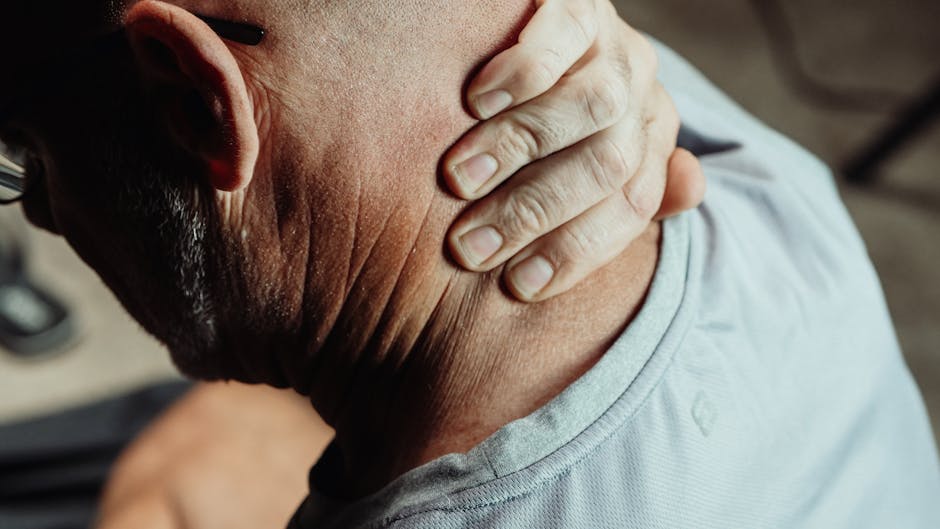Dining Out While Managing Chronic Pain
As individuals living with chronic pain navigate through their daily lives, simple activities like dining out can present unique challenges. From selecting the right restaurant to managing pain triggers while enjoying a meal, the experience of dining out can vary significantly for those dealing with chronic pain conditions. In this comprehensive guide, we will delve into the world of dining out while managing chronic pain, exploring various strategies, tips, and considerations to make the experience as enjoyable and comfortable as possible.
The Impact of Chronic Pain on Dining Out

Chronic pain, often defined as pain persisting for more than 12 weeks, can affect individuals both physically and emotionally. The sensation of pain can vary from mild to severe, and the location of the pain can also differ based on the underlying condition. When it comes to dining out, factors like seating arrangements, lighting, noise levels, and menu options can all influence the comfort level of individuals with chronic pain.
For instance, individuals with back pain may find it challenging to sit on uncomfortable chairs for an extended period. Those with sensitivity to light or noise may struggle in busy restaurants with bright lighting and loud music. Moreover, individuals with dietary restrictions due to their condition may face limited choices on menus, making it difficult to find suitable options while dining out.
Despite these challenges, dining out can also provide a much-needed break from the routine and an opportunity for socialization. By understanding how to navigate these obstacles, individuals with chronic pain can still enjoy the experience of dining out without compromising their well-being.
Choosing the Right Restaurant

One of the first steps in managing chronic pain while dining out is selecting the right restaurant. Factors to consider when choosing a restaurant include the ambiance, seating arrangements, noise levels, lighting, and menu options. Opting for a restaurant with comfortable seating, dim lighting, and a quieter atmosphere can help alleviate pain triggers and create a more relaxing dining experience.
Additionally, checking the menu beforehand to ensure there are suitable options for individuals with dietary restrictions or preferences can prevent unnecessary stress during the dining experience. Many restaurants now offer online menus with detailed information about ingredients and preparation methods, making it easier for individuals with chronic pain to plan their meal in advance.
Moreover, choosing a restaurant with accessible facilities, such as ramps and handicap-accessible restrooms, can also make the dining experience more comfortable for individuals with mobility issues or other physical limitations related to chronic pain.
Managing Pain Triggers

Identifying and managing pain triggers while dining out is essential for individuals with chronic pain. Common triggers include uncomfortable seating, bright lights, loud noises, and certain foods that may exacerbate pain symptoms. By being mindful of these triggers and taking proactive steps to address them, individuals can minimize discomfort and enjoy their meal more fully.
For example, individuals with back pain can request a chair with proper support or bring a cushion to provide additional comfort. Those with sensitivity to light can choose seating away from bright sources or wear sunglasses if necessary. Noise-canceling headphones or earplugs can help individuals with sensitivity to noise cope with loud environments.
In terms of food triggers, communicating dietary restrictions or allergies to restaurant staff can help ensure that meals are prepared according to individual needs. Many restaurants are willing to accommodate special requests, such as omitting certain ingredients or preparing dishes in a specific way to meet dietary requirements.
Practicing Mindfulness and Relaxation Techniques

Practicing mindfulness and relaxation techniques can be beneficial for individuals managing chronic pain while dining out. Techniques such as deep breathing, visualization, and progressive muscle relaxation can help reduce stress and tension, making the dining experience more enjoyable.
Before heading to a restaurant, taking a few moments to practice deep breathing or visualization exercises can help calm the mind and body, preparing individuals to better cope with potential pain triggers. During the meal, focusing on the senses and savoring each bite can enhance the overall dining experience and distract from pain sensations.
Additionally, incorporating relaxation techniques like progressive muscle relaxation, where individuals tense and then release each muscle group in the body, can help alleviate physical tension and promote relaxation while dining out. By incorporating these practices into their routine, individuals with chronic pain can enhance their overall well-being and make dining out a more pleasant experience.
Seeking Support and Understanding
Seeking support and understanding from friends, family, or dining companions can make a significant difference for individuals managing chronic pain while dining out. By communicating their needs and limitations openly, individuals can ensure that their dining experience is more comfortable and enjoyable.
Friends and family members can offer assistance with tasks like carrying plates, selecting menu items, or navigating the restaurant space, easing the burden on individuals with chronic pain. Additionally, having a supportive dining companion who understands the challenges of chronic pain can provide emotional support and companionship during the meal.
Furthermore, some restaurants offer accommodations for individuals with disabilities or special needs, such as priority seating, assistance with mobility, or modified menu options. By inquiring about these services in advance, individuals can make the necessary arrangements to ensure a smooth dining experience.
Practical Tips for Dining Out with Chronic Pain
In addition to the strategies mentioned above, there are several practical tips that individuals can follow to make dining out with chronic pain more manageable:
1. Plan Ahead:
Research restaurants in advance, check menus for suitable options, and make reservations to secure a comfortable dining experience.
2. Bring Comfort Items:
Consider bringing items like cushions, heating pads, or noise-canceling headphones to enhance comfort and reduce pain triggers.
3. Communicate Needs:
Don’t hesitate to communicate dietary restrictions, seating preferences, or accessibility needs to restaurant staff to ensure a more accommodating experience.
4. Pace Yourself:
Take breaks as needed, enjoy your meal at a leisurely pace, and listen to your body’s signals to prevent overexertion.
5. Stay Hydrated:
Drink plenty of water throughout the meal to stay hydrated and support overall well-being, especially if medications contribute to dry mouth or dehydration.
Expert Opinions
According to Dr. Jane Doe, a pain management specialist, “Dining out can be a challenging experience for individuals with chronic pain, but with the right strategies and support, it is possible to enjoy meals outside the home. Planning ahead, communicating needs, and practicing relaxation techniques can all contribute to a more comfortable dining experience.”
Dr. John Smith, a nutritionist, emphasizes the importance of maintaining a balanced diet while dining out with chronic pain. “Choosing nutrient-rich foods, avoiding trigger foods, and staying hydrated are essential for managing chronic pain symptoms and supporting overall health. By making informed choices and advocating for your needs, individuals can make dining out a positive experience.”
Conclusion
To wrap things up, dining out while managing chronic pain presents unique challenges that can impact the overall dining experience. By choosing the right restaurant, managing pain triggers, practicing mindfulness techniques, seeking support, and following practical tips, individuals with chronic pain can enjoy meals outside the home more comfortably. It is essential to communicate needs, advocate for accommodations, and prioritize self-care to make dining out a positive and enjoyable experience for individuals living with chronic pain.
Remember, everyone’s experience with chronic pain is unique, so it’s important to listen to your body, communicate your needs, and make choices that support your well-being while dining out. By incorporating these strategies into your dining routine, you can make the experience more manageable and fulfilling, allowing you to savor each meal without compromising your health and comfort.




